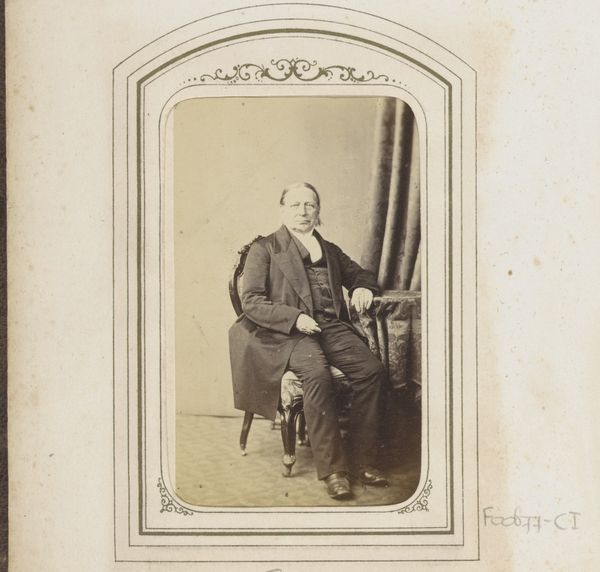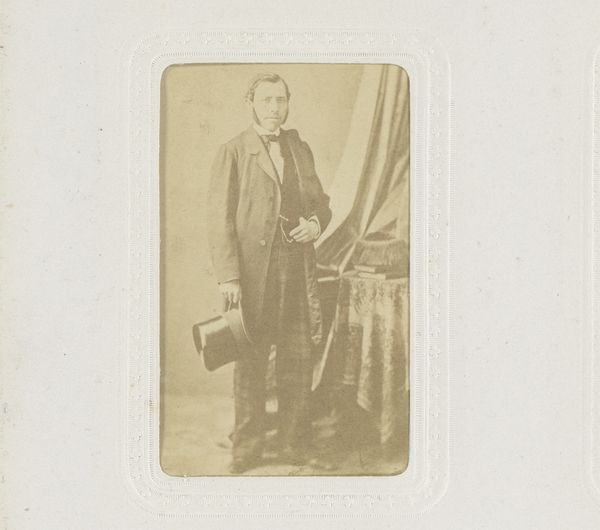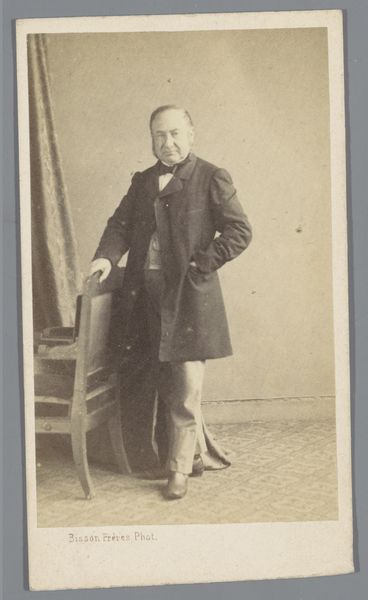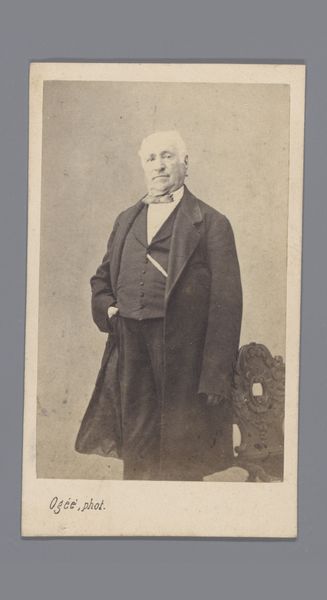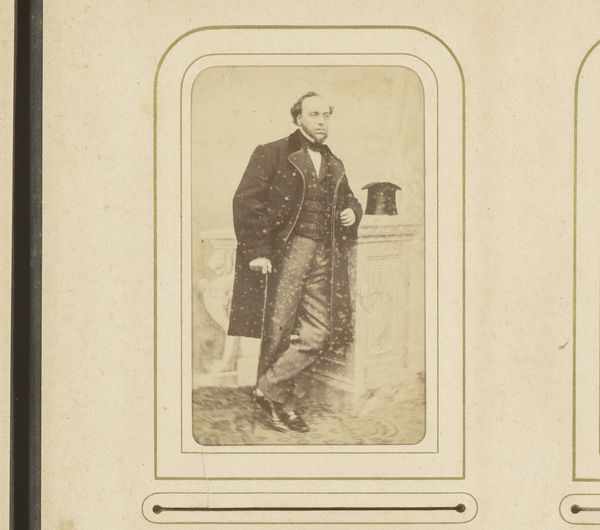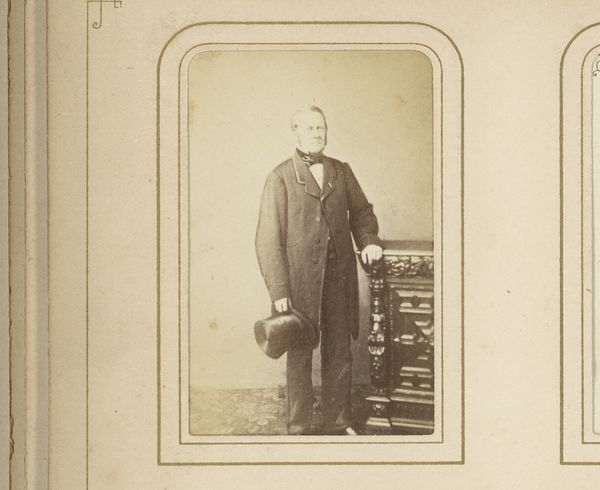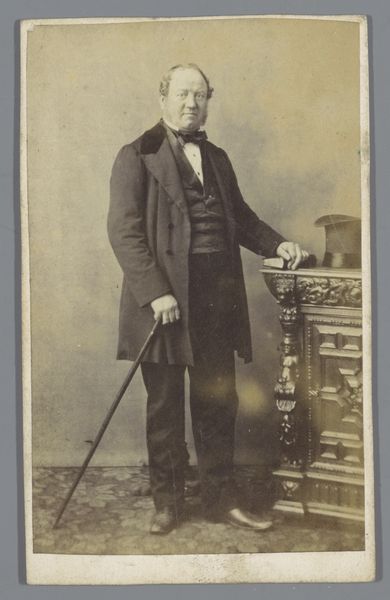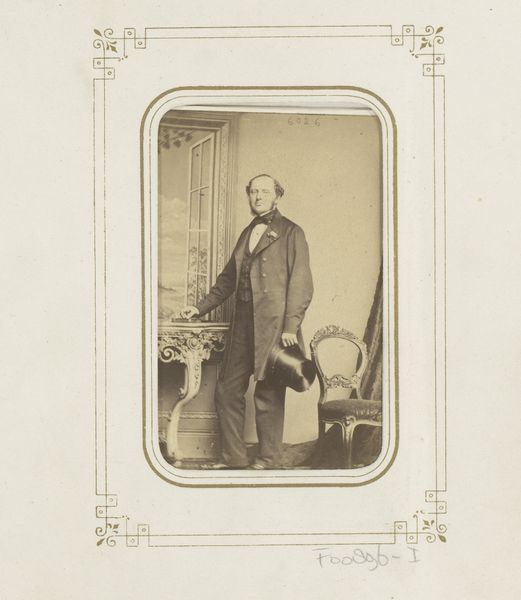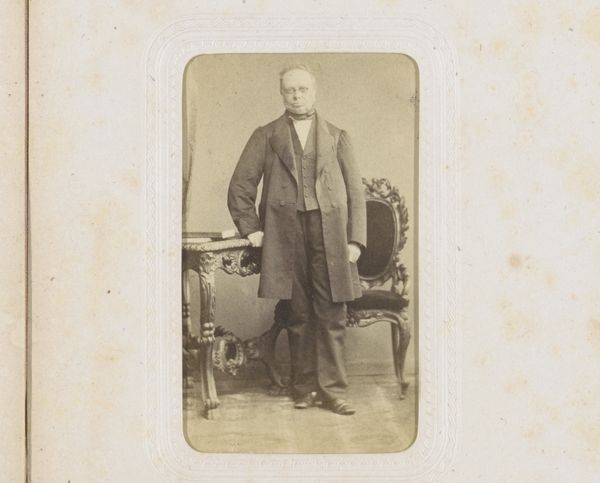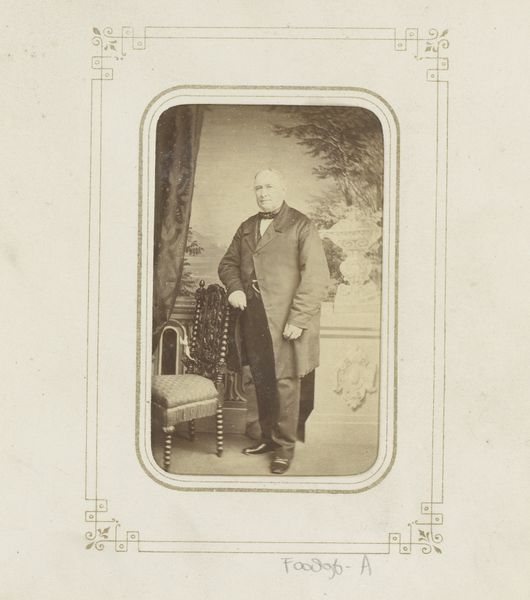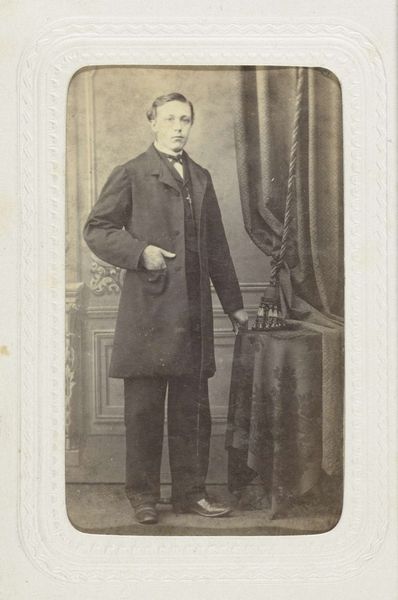
Dimensions: height 164 mm, width 126 mm
Copyright: Rijks Museum: Open Domain
Editor: This gelatin-silver print, “Portret van de Oppenheims, zwagers van de fotograaf” or "Portrait of the Oppenheims, brothers-in-law of the photographer," was captured by Eduard Isaac Asser around 1852. The sepia tones lend the subjects a rather stoic and detached air, don't you think? What story do you see unfolding here, considering it's a familial portrayal? Curator: Well, it's interesting, isn't it? They do seem caught in a moment of… perhaps enforced seriousness. Given it’s the 1850s, early photography demanded long exposure times; try holding a smile for minutes on end! But beyond that, it’s intriguing how the men, presumably comfortable with the photographer, still present this formality. Consider the power dynamics inherent in early portraiture – it was an event, a deliberate act of memorialization. I wonder, are they presenting a united front, literally leaning on the same object? Editor: That's insightful! The posing stand in the center - which at first seemed a random prop – does unite them compositionally. There’s also a subtle sense of romanticism... that soft focus gives them this ethereal quality. Curator: Exactly! The blurring softens reality, imbuing the scene with a touch of longing. Early photography often echoed painterly styles, aiming for idealized portrayals. The imperfections, in a funny way, heighten the sense of lived experience. Imagine, their lives reduced to this single captured moment... What do you suppose they were like? Editor: It makes me think about how we capture memories today - selfies and Instagram versus a carefully orchestrated photograph like this. So much intention, so little… spontaneity, perhaps? Curator: A fascinating point! The deliberate nature underscores how much these portraits were about crafting a specific image, versus reflecting pure reality. In this, the imperfect artistry almost tells a more honest truth than a crisp digital photo can today, don't you think? Editor: Definitely food for thought. It makes you realize the image contains more than just meets the eye, a conversation and time capsule, perhaps? Curator: Precisely! That's the real beauty, isn't it? Every artwork is an invitation into a richer dialogue.
Comments
No comments
Be the first to comment and join the conversation on the ultimate creative platform.
